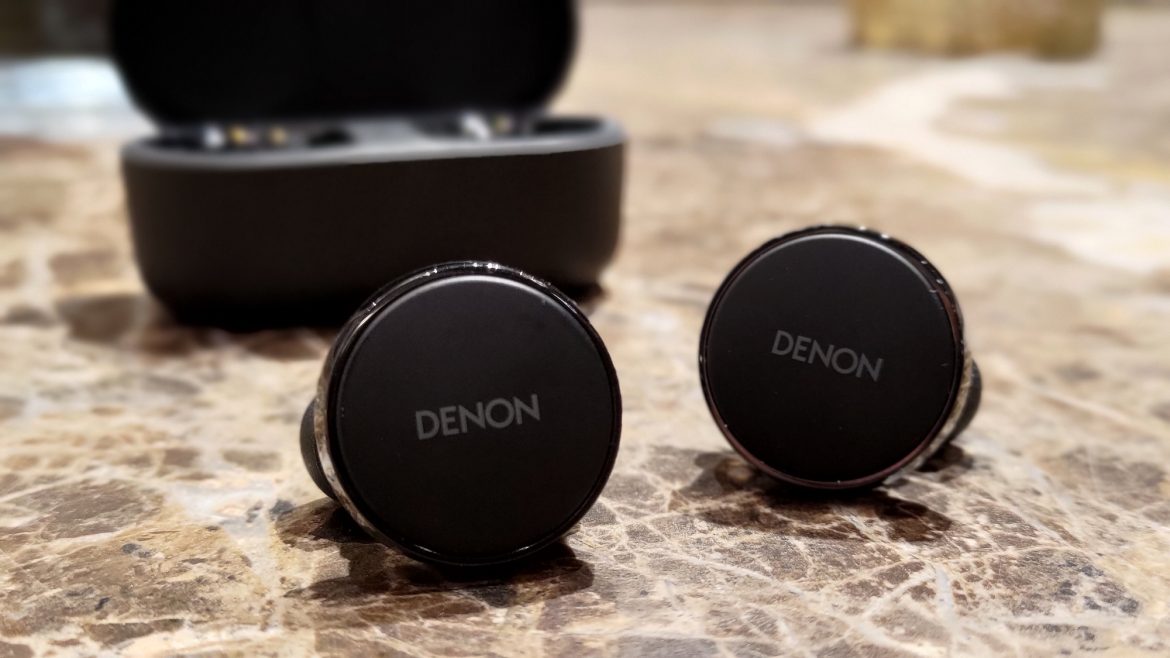TL;DR
Denon's PerL Pro 665 headphones boast a luxurious feel, personalized sound via Masimo's hearing tech, and impressive bass. However, inconsistent measurements from the Masimo system and a lack of granular ANC/ambient sound controls at this premium price point dampen the experience. While they offer comfort, connectivity, and powerful audio, they don't quite deliver the standout performance needed to justify the cost, especially with the hit-or-miss personalization. Discover if the PerL Pro 665 are the right fit for you by reading the full review!
The Denon PerL Pro 665 immediately distinguishes itself, offering a unique user experience with its “Welcome Back” voice prompt, a refreshing departure from the typical tones or generic “connected” notifications found in other headphones.
The Denon PerL Pro 665 incorporates advanced features, including a hearing measurement function powered by Masimo, customisable controls, multi-point connectivity, aptX Lossless support, and notable acoustic capabilities.
However, certain performance aspects fall short when compared to competitors, presenting a concern given the premium price point of these headphones.
Let’s delve into the details of the Denon PerL Pro 665.
Overall Denon PerL Pro 665
The headphones exude a luxurious feel and possess a substantial weight. Each earpiece weighs slightly over 8 grams, with a surface area comparable to a cufflink. Denon provides adaptable fitting options, allowing users to choose between an in-ear arch and a tab that rests against the ear. While the overall presentation is refined, the ear tips are simply packaged in a bag, which contrasts with the otherwise premium experience.
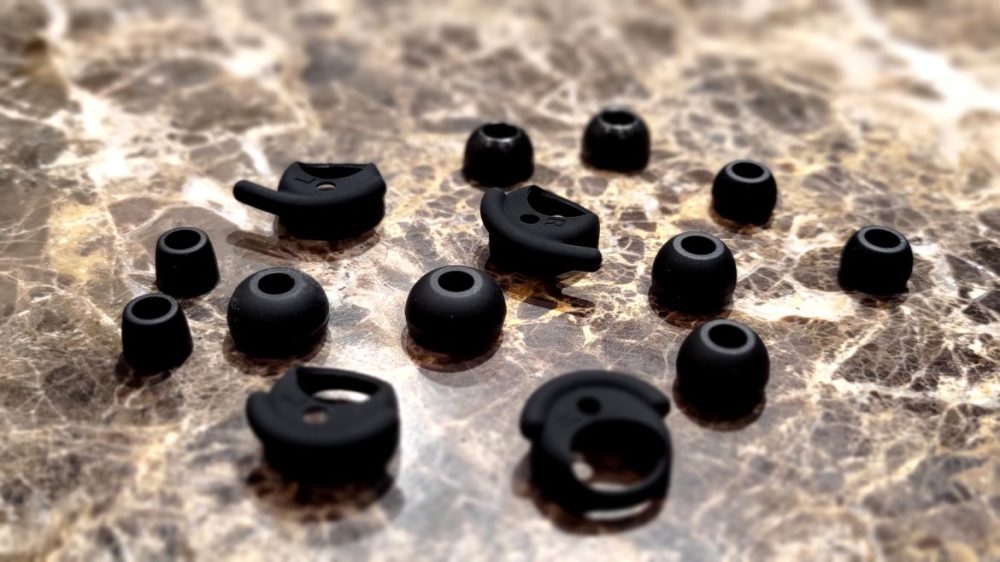
The Denon PerL Pro 665 strikes a balance between sound quality and technological features, but it doesn’t excel in all areas. Button functionality is fully customizable, but the headphones only support multi-point connectivity (up to two devices simultaneously), not triple-point. While an advanced hearing measurement function is included, alternative sound profiles are absent. The ambient sound mode and ANC are present, but lack granular adjustment options. In this area, the Sony WF-1000XM4 remains a benchmark.
So what’s the deal with Masimo AAT (Adaptive Acoustic Technology)?
Various hearing test technologies have been evaluated, ranging from ear canal imaging to auditory tests that measure hearing and generate personalized profiles. Some solutions verify proper ear tip insertion, while others measure sound leakage.

Denon’s PerL (Personal Listening) Pro 665 collaborates with Masimo, a global technology and pharmaceutical company, aligning with industry leaders like Marantz, Bowers & Wilkins, and Boston Acoustics. Masimo, a manufacturer of medical instruments, including hearing tests, provides the technology that measures ear response to various sounds, translating this data into a personalized sound profile.
The practical effectiveness of this technology is subject to debate, especially considering Denon’s relatively neutral sound profile as a default alternative.
A potential issue is inconsistency, which warrants further explanation. Three separate measurements were conducted under identical conditions: same time of day, same room, and minimal background noise, over a period of days. The results are shown below.

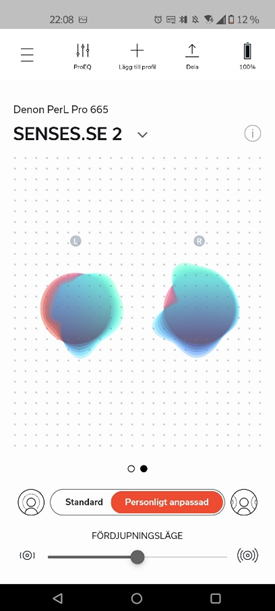
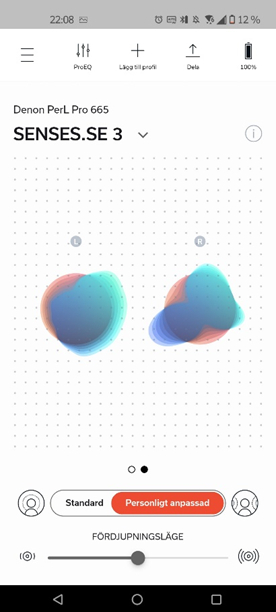
The images detail the ear’s frequency response, revealing inconsistencies across the measurements despite using the same ears. While similarities exist, significant differences are also present. This variability poses a challenge for consistent sound reproduction and affects the overall listening experience.
For personalized hearing profiles to be effective, consistency is crucial. Variability can arise from factors such as ear fatigue or slight variations in earphone placement. A minor ear blockage, such as from pressure changes during an elevator ride, could influence treble perception, affecting the Masimo measurement. This could lead to overcompensation, resulting in excessive treble after the blockage clears. Consequently, EQ adjustments become unreliable and undermine the intended personalization.
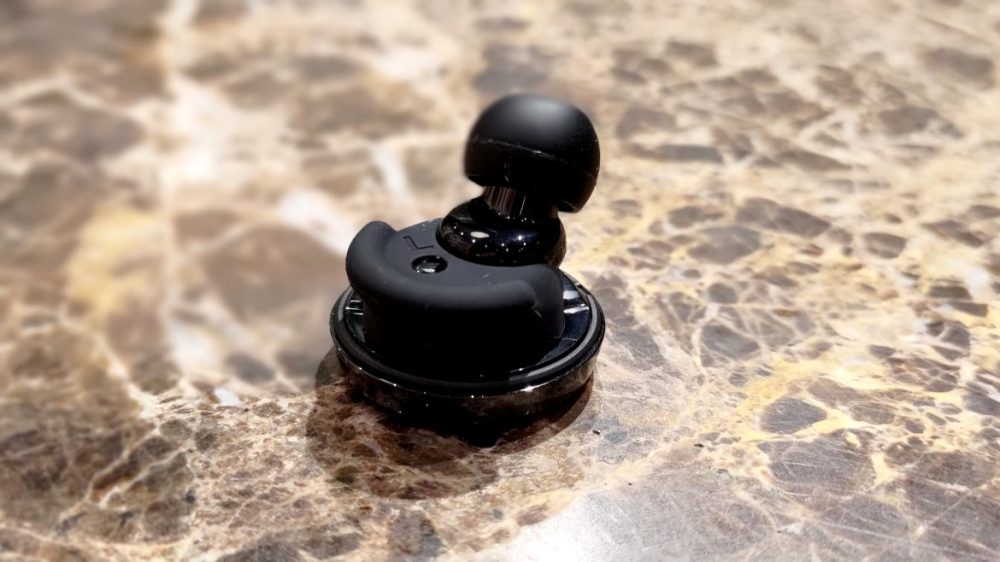
The Sound Experience – Denon PerL Pro 665
The aforementioned inconsistencies complicate sound assessment. However, the headphones demonstrate exceptional competence and acoustic prowess, surpassing many competing products. Bass frequencies deliver palpable impact, creating a full and immersive soundscape even at lower volumes, indicating highly responsive diaphragms. This is indeed impressive.
The soundstage exhibits remarkable width and envelopment. For example, the chorus in Etherwood & Zara Kershaw – Lighthouse provides an immersive audiophile experience.
However, the sound can also feel somewhat muddled and lack precision. In tracks like Solar Fields – Sombrero, the soundstage can become excessively bass-heavy. Conversely, in Alan Jackson – Drive, the clarity and distinctness experienced with the Technics AEH-AZ80 are missed. Yet, in Hans Zimmer – Buyer Beware, the bass tones and drums deliver a visceral impact around 1:30 into the song. This inconsistent experience raises questions about whether the headphones exhibit frequency imbalance or whether the Masimo processing contributes to the variations. This is unfortunate, as the Denon PerL Pro 665 is undoubtedly powerful and impactful.

Conclusion Denon PerL Pro 665
As previously mentioned, these headphones represent a significant investment. The Masimo collaboration likely contributes to the elevated cost. At this price point (approximately 4,300 kronor), comprehensive excellence is expected. The Denon PerL Pro 665 excels in several key areas: rapid connectivity, comfortable fit, intuitive controls, sufficient customization, and potent audio output.
However, the overall experience lacks a certain spark, and no single feature truly stands out beyond the welcome message (!). While commendable, most features have been seen before. If the sound quality were consistently exceptional, these shortcomings might be overlooked.
Ultimately, the Denon PerL Pro 665 falls short of complete satisfaction, largely due to the individualized sound profile concept. Without this feature, or with more options, these headphones could potentially justify their price. It remains to be seen if they will improve over time, similar to the Sennheiser Momentum True Wireless 2. Currently, they do not fully capitalize on their potential.
Denon provided the review samples for this evaluation. The provision of materials does not influence our editorial independence. Our reviews are conducted with the reader and consumer as our primary focus.
